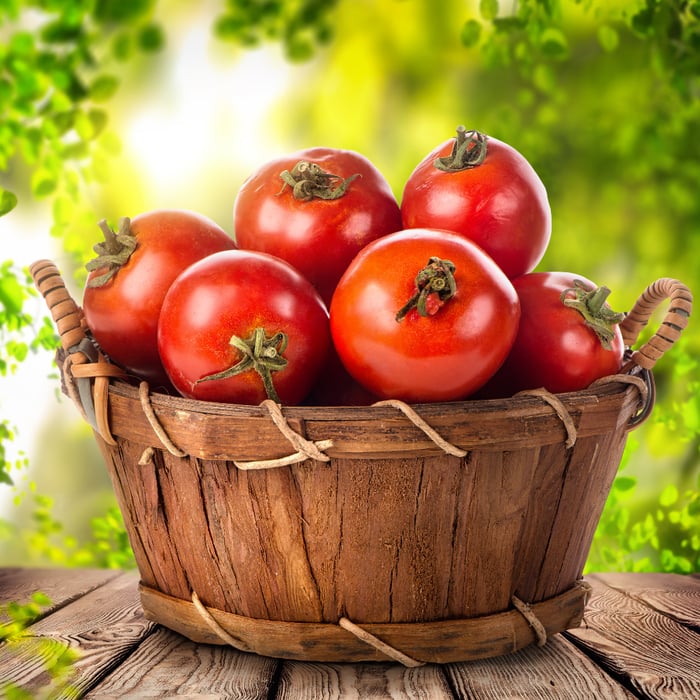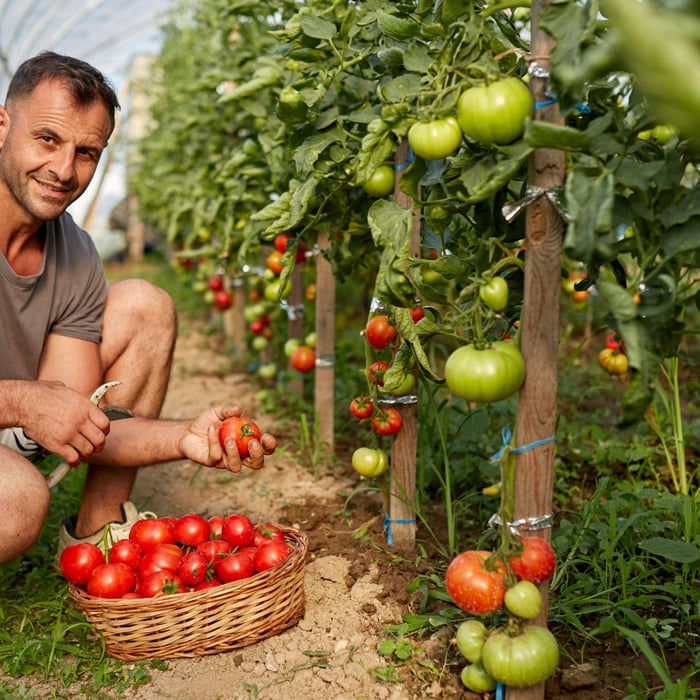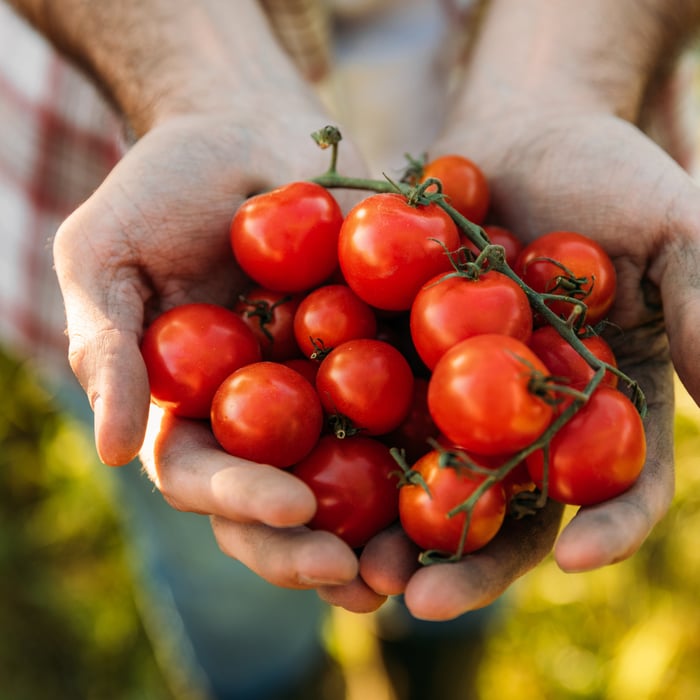Georgia is one of the numerous climates and regions where tomatoes can be cultivated. Tomatoes are a wonderful and adaptable fruit. Georgia is renowned for having hot, muggy summers, which can make it difficult to grow tomatoes. Yet, with the appropriate methods and attention, you can cultivate a plentiful harvest. Everything you need to know about growing tomatoes in Georgia will be covered in this blog post, from picking the best types to taking care of your plants all growing season. So let's start learning how to grow tomatoes in Georgia!
Selecting Tomato Seeds for Georgia
Choosing the appropriate kinds for your climate and growing conditions is the first step in growing tomatoes in Georgia. There are many distinct tomato varieties available, each with its own special traits and cultivation needs. The following tomato types are common in Georgia:
- Celebrity, rounded fruits that are excellent for slicing, this tomato variety is a favorite. Celebrity tomatoes are a terrific option for novices because of their outstanding flavor and disease resistance.
- An heirloom variety called Cherokee Purple yields huge, tasty fruits that are a deep shade of purplish red. The rich, sweet flavor of Cherokee Purple tomatoes makes them a favorite among tomato lovers. It is a beefsteak type tomato that is fun to grow.
- Early Girl: This well-liked early-season tomato variety yields medium-sized, speedily ripening fruits. Tomatoes called Early Girl are excellent for gardeners who wish to start the growing season early.
- San Marzano: This is an Italian tomato variety renowned for its superior flavor and long, cylindrical shape. Chefs and home cooks alike love San Marzano tomatoes because they work so well in sauces.
- Sweet 100: This cherry tomato cultivar yields massive clusters of tiny, tasty fruits. Kids love sweet 100 tomatoes because they are great for munching.
Heirloom Tomato Seeds for Planting | 16 Variety Pack
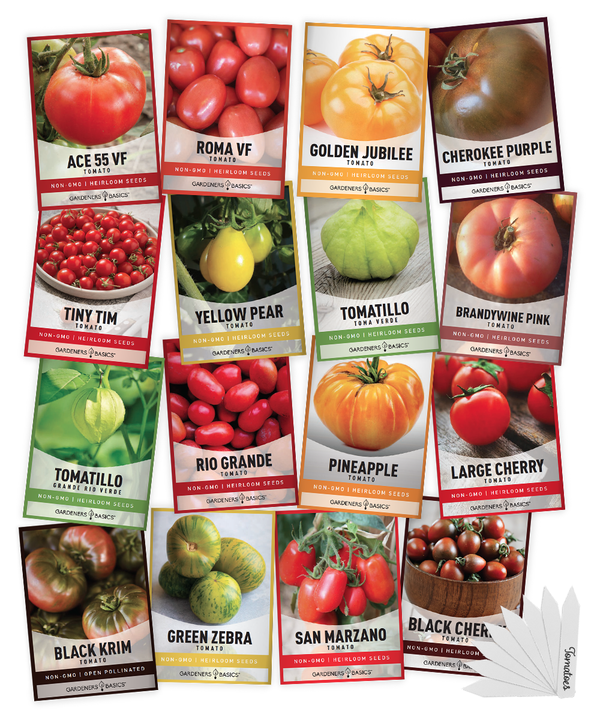
$19.95
The Ultimate Tomato Seed Variety Set - 16 Heirloom, Non-GMO Tomato Varieties for Your Home Garden Introducing our 16 Tomato Seeds Variety Pack, a must-have collection for any gardening enthusiast or professional grower! This premium seed assortment includes a diverse selection… read more
Preparing the Soil for Tomato Plants
Once you have chosen your tomato varieties, the next step is to prepare the soil for planting. Tomatoes thrive in well-draining, nutrient-rich soil that is slightly acidic (pH between 6.0 and 6.8). Here are some tips for preparing the soil:
-
Test the soil: Use a soil testing kit to determine the pH level of your soil. If the pH is too low (below 6.0), add lime to raise it. If the pH is too high (above 7.0), add sulfur to lower it.
-
Add organic matter: Tomatoes love organic matter, so add plenty of compost or well-rotted manure to your soil. This will help improve soil structure and fertility.
-
Mix in fertilizer: Before planting your tomatoes, mix in a balanced fertilizer (such as 10-10-10) to provide essential nutrients for your plants.
Tomato Seed Assortment | 8 Variety Pack
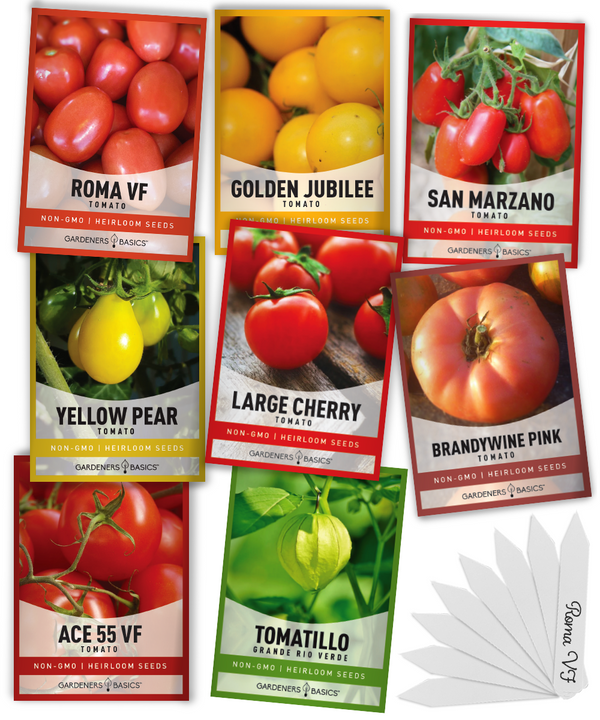
$15.95
8 Tomato Seeds Variety Pack – Heirloom, Non-Hybrid, Open-Pollinated, Non-GMO – Perfect for Home Gardens! Unlock the secrets to a thriving tomato garden with our premium 8 Tomato Seeds Variety Pack! Carefully curated for tomato lovers and gardening enthusiasts alike, this… read more
Planting Tomato Seedlings
Once your soil is prepared, it's time to plant your tomato seedlings. In Georgia, it's best to plant tomato seedlings in late March or early April, once the threat of frost has passed. Here are some tips for planting your seedlings:
-
Choose a sunny location: Tomatoes need at least six hours of direct sunlight each day, so choose a location that gets plenty of sun.
-
Dig planting holes: Dig holes that are twice as wide as the root ball of your seedlings and about as deep as the length of the stem (minus the leaves).
-
Add support: If you are planting indeterminate tomato varieties (which grow tall and require support), add a stake or cage to the planting hole before planting your seedlings.
-
Plant the seedlings: Carefully remove your seedlings from their containers and place them in the planting holes. Gently pack soil around the roots and water well.
Rare Tomato Seeds | 5 Variety Pack
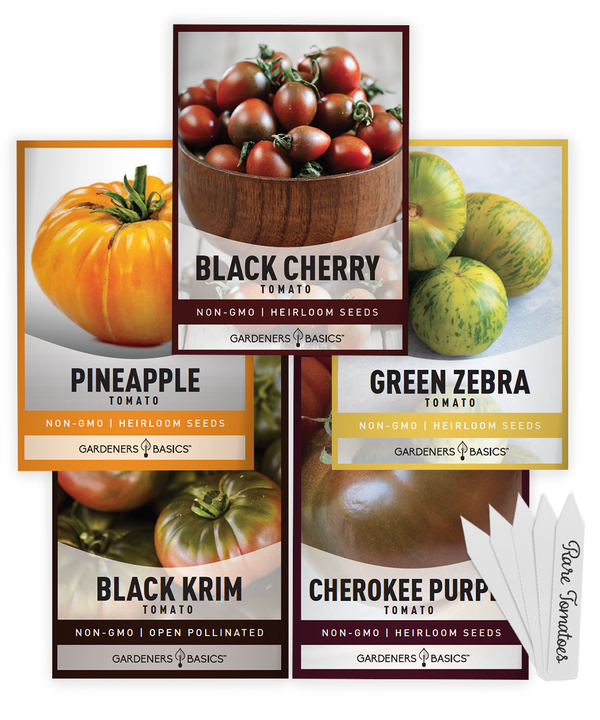
$9.95
Grow Unique Tomatoes: 5 Rare Tomato Seeds Collection for Your Garden Introducing our 5 Rare Tomato Seeds Variety Pack, a must-have for every tomato lover and avid gardener! This premium collection features a curated selection of rare heirloom tomato seeds to… read more
Caring for Tomato Plants
Once your tomato plants are in the ground, it's important to care for them properly to ensure a healthy and productive harvest. Here are some tips for caring for your tomato plants throughout the growing season:
-
Watering: Tomatoes need consistent moisture to thrive, so be sure to water your plants regularly. Aim to water deeply (about an inch of water per week) and avoid getting water on the leaves, which can promote disease.
-
Mulching: Adding a layer of mulch around your tomato plants can help retain moisture in the soil and prevent weed growth. Use natural mulch such as straw or shredded leaves.
-
Fertilizing: In addition to the initial fertilizer you added when planting, it's a good idea to fertilize your tomato plants every 3-4 weeks throughout the growing season. Use a balanced fertilizer or one that is high in phosphorus, which promotes fruit development.
-
Pruning: If you are growing indeterminate tomato varieties, it's important to prune them to keep them from getting too tall and to promote better air circulation. Remove suckers (the shoots that grow between the main stem and branches) and any yellowing or diseased leaves.
-
Pest control: Tomatoes can be susceptible to a variety of pests, such as aphids, tomato hornworms, and whiteflies. Monitor your plants regularly for signs of pest damage and use natural pest control methods, such as spraying with insecticidal soap or using beneficial insects like ladybugs.
Vegetable Seed Vault Kit | 35 Variety Pack

$29.95
$49.95
Ultimate Survival Seed Vault: 16,000+ Non-GMO Heirloom Vegetable Seeds for Emergency Preparedness Introducing the Seed Vault Kit, your all-in-one solution for emergency preparedness and sustainable gardening. This premium seed kit contains over 16,000 non-GMO, Heirloom, Non-Hybrid, and Open Pollinated seeds,… read more
Harvesting Tomatoes
As your tomato plants mature, you will start to see fruit developing on the vines. Here are some tips for harvesting your tomatoes:
-
Wait for the right time: Tomatoes are ready to be picked when they are fully ripe and have a deep, even color. Depending on the variety, this could be anywhere from 60 to 90 days after planting.
-
Handle with care: Tomatoes are delicate fruits, so be sure to handle them gently when harvesting. Use pruning shears or scissors to cut the stem just above the fruit.
-
Store properly: Tomatoes are best stored at room temperature and should be used within a week of harvesting. Avoid storing them in direct sunlight or in the refrigerator, as this can cause them to lose flavor and texture.
In conclusion, growing tomatoes in Georgia can be a rewarding experience if you follow the right steps and techniques. Choosing the right varieties, preparing the soil properly, planting seedlings carefully, and caring for your plants throughout the growing season are all important factors in a successful harvest. With a little patience and care, you can enjoy a bountiful crop of delicious, home-grown tomatoes all season long.



